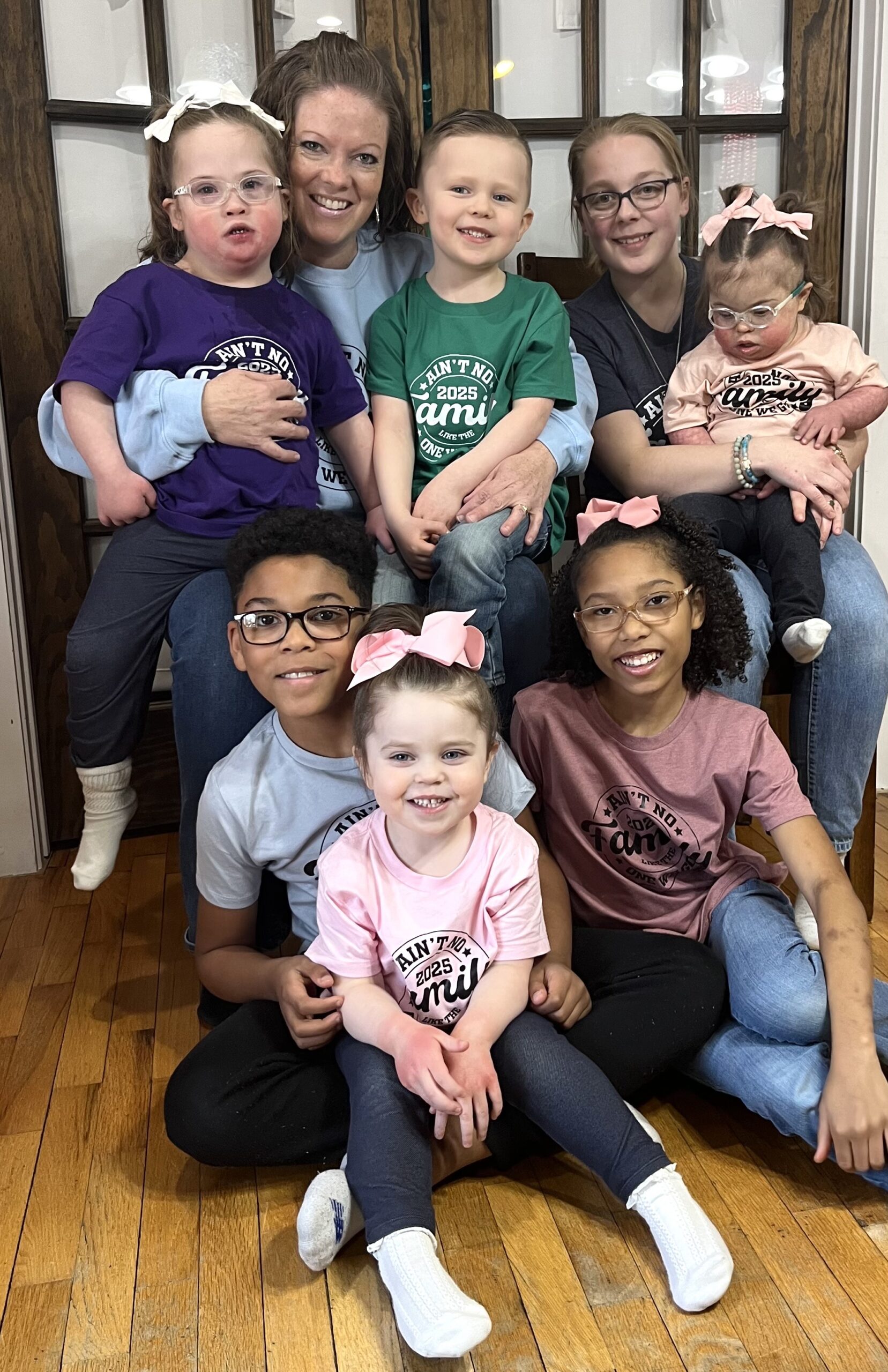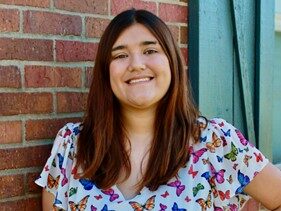Last month, we featured a quote from Catherine Leake, a Sterling, Kansas, foster parent, to highlight the importance of siblings remaining together when placed in foster care. Since May is National Foster Care Month, we’re sharing Catherine’s full story. Hopefully, it will inspire others to give foster parenthood a chance. Is there room in your future to bring healing and hope to a child in need?
She never intended to return to Kansas, let alone rural Kansas … to a town with barely more than 2,500 people. Yet, as we know, home is where the heart is, and when home means family, that’s where we want to be.
“It’s a great place to go to college, but I never thought I would live in this state, so after graduation, I went back to Colorado to teach,” said Catherine Leake. “Then I taught in Mexico for a while, and then in California.”
While teaching anger management in California, Catherine’s home became a safe space and refuge for many of her students.
“I ended up with a bunch of them staying with me. They were living on the streets and had nowhere else to go. I knew nothing about fostering, but after a while, I thought that maybe I should get a license so I could start taking kids in legally. So, I got my first foster care license in California about 15 years ago.”
Her college debt prompted Catherine to return to Sterling, Kansas, home of Sterling College, her alma mater. “I thought I’d just come back for a while and substitute teach while I paid off my student debt. Once I got here, I thought, ‘I already know how to be a foster parent, and I have the room, so I may as well foster while I’m here.’”
So, 11 years ago, Catherine received her license through Saint Francis Ministries and has continued to foster children of all ages since. The children who have passed through the home of the special education teacher number in the triple digits.
“I have no idea exactly how many; it’s been a lot,” she said. “There have been dozens and dozens of long-term placements, but probably hundreds of emergency and short-term placements. Some kids have stayed here up to three and a half years.”
About half of those children have been siblings.
“That includes both emergency and long-term placements,” said Catherine. “I would say most have been sibling sets of two or three, but some emergency placements have been sets of four or five. That includes all ages, from a few days old to teenagers.”
For any child, removal from their home is both disruptive and traumatic. It’s difficult enough to be separated from parents, but losing contact with siblings adds to the distress. Siblings in foster care share an identity, and the bond between them provides a powerful source of comfort and stability, especially during difficult times like out-of-home placement.
Catherine takes sibling sets because she understands the importance of brothers and sisters remaining together in foster care placements.
“They have a biological connection,” she said. “They share memories and experiences that, no matter how deeply others love them, no one else can understand. “Even if they’re adopted and surrounded by love, just having someone else in the family who looks like them and understands their culture and history can give them a deeper sense of belonging and quicken their ability to heal.”
Catherine is so committed to keeping siblings together that she’s adopted three boys and five girls, six of whom comprise three sets of siblings. And she does it alone … well, with help from her church, friends, and family (her mother lives nearby). It’s a communal effort.
“I’m blessed to have support,” she said. “My church has been extremely helpful, sharing meals, hanging out with us, providing childcare, and praying for us.
She finalized her most recent adoption in February, two children she’d fostered.
“So, although they are Spanish speakers, and we speak Spanish, they came with a different cultural identity. They spoke to each other in Spanish, but they also shared a sense of culture. We could communicate with them, but that shared culture gave them a deep sense of connection, safety, and belonging that they wouldn’t have experienced if placed alone. They know these special songs, and even now, something will trigger a memory for them, and they’ll start singing together. I would never have been able to provide that to them.”
After 11 years back in Kansas, Catherine remains committed to providing a safe and loving home to children who need it most. She’s committed to her community, her family, and to ensuring that siblings remain together through one of the most difficult times of their lives.
“Can it be hard? Yes, sometimes. But, if we can give a child a chance to maintain the most stable relationship of their life, to stay with the one person they’ll likely know their entire life, why wouldn’t we? We could be the person who does that for them. Sure, it might be a little difficult, and we might be a bit inconvenienced for about six months, but we could provide healing to a child’s life for the next 40 years. So, I think it’s a very, very worthwhile thing to do.”





